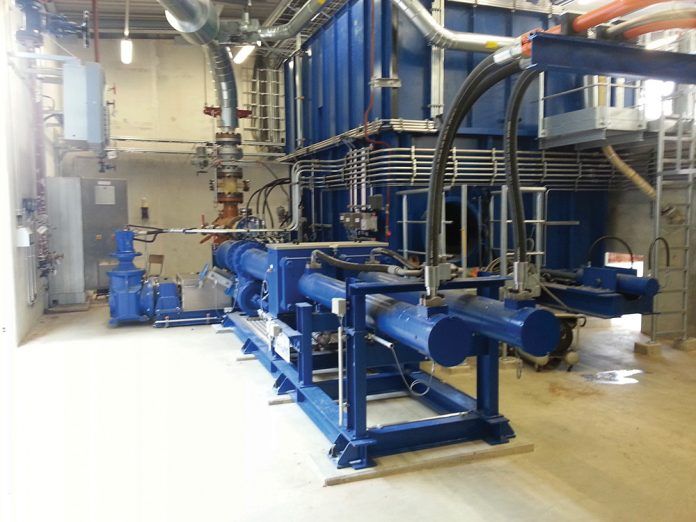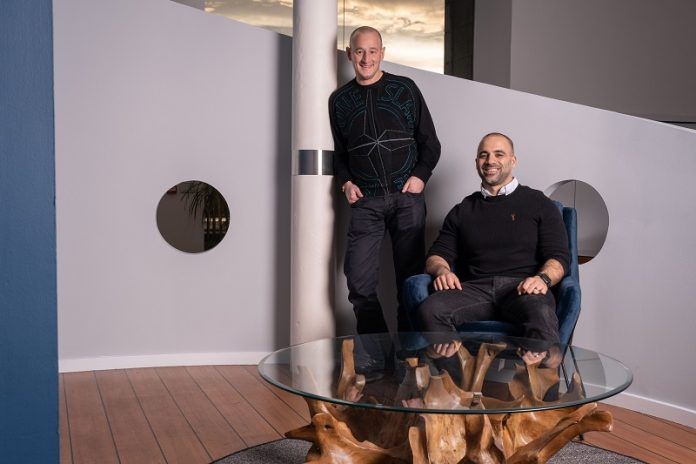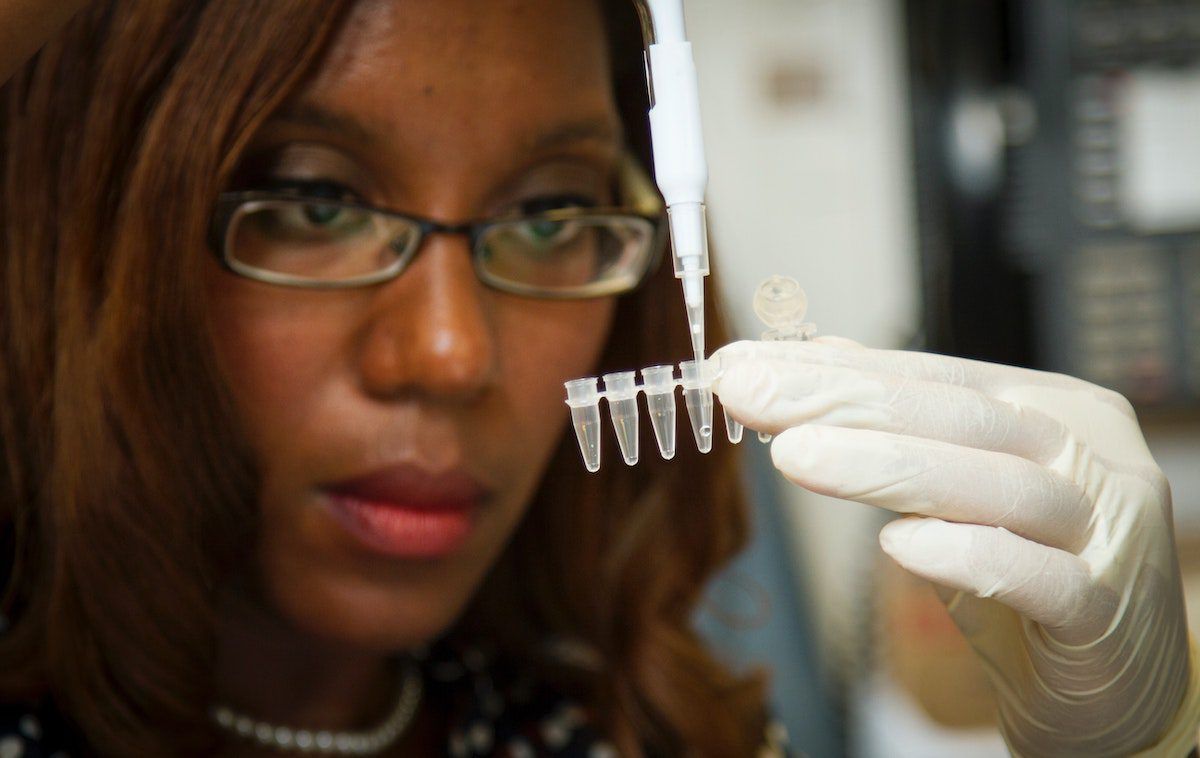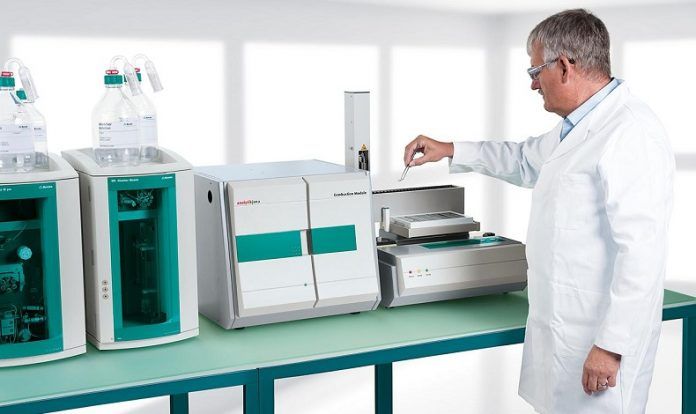Wastewater treatment is not just a piece of cake

Remo Schulz, MD of Saxlund Group’s German operations, discusses German-led changes in European legislation for phosphorous recovery, and how innovation is supporting sustainability goals in wastewater recovery.
It makes sense to put the status of the industry in context. Specifically in Europe there is continuing debate on the appropriate handling of sludge as the defined solid waste produce from wastewater and sewage treatment.
Safer methods
The late 20th-century drive to clean final effluent discharge into rivers and seas means that sludge cake must now be safely utilised and disposed of. Putting raw or lime treated sludge cake directly onto agricultural land does not have a long-term future, while land filling is costly and a lost opportunity. Methods to safely utilise sludge cake are major drivers for wastewater companies. Dewatered sludge cake is generally 18 – 35% dry solids, and a non-free flowing material that can be variable in its mechanical handling properties due to process, location and / or season.
Pollution control at source is crucial
The wastewater sector is under pressure due to the presence of degradable and nondegradable pollutants entering our sewers and from the increased flow to sewers caused by climate change and urban development.
The sector is being asked to deliver clean water by removing these pollutants from wastewater; however, this process generates an increasing amount of urban wastewater treatment sludge (UWWTS) and treatment efforts, as well as carbon emissions and higher costs to customers. Improved control of pollution at source is urgently needed for all non-biodegradable pollutants if we are to truly embrace the circular economy. The new EU Zero Pollution Action Plan is based on a ‘zero pollution hierarchy’.
This is outlined by research from organisations such as EurEau (the European Federation of National Associations of Water Services), representing national drinking and wastewater service providers from 29 countries. The Position Papers are of particular note: ‘Enabling the circular potential of sewage sludge within the EU legislative framework’ and further analysis in ‘Waste water treatment – sludge management’.
Innovative business models such as asset management and sludge retail followed by disruptive applications like hydrogen fuel from sludge will drive the circular economy of the European sludge treatment systems market.
It may be an established market in this respect, but many of its utilities suffer from ageing infrastructure where retrofits and rehabilitation will be key, along with technologies addressing micropollutants in sludge. The European Commission has approved fertiliser generated sludge, a key driver to minimise waste, lower energy consumption and reduce the risk of phosphorus shortage.
The market is broadly classified into two systems: sludge treatment and sludge recovery. The former include sludge thickening & dewatering, sludge digestion and sludge drying. The latter consist of nutrient recovery and alternate materials. The sludge treatment systems and recovery market are expected to expand at a CAGR of 6.51% from 2019 to 2025.
Processing methods
There are currently three main methods of utilisation / disposal:
ADD sludge
Widely seen in the UK and across Europe, this method generates additional anaerobic activity, boosting energy recovery in Anaerobic Digestion AD plants. There are currently two main technologies:
Thermal hydrolysis, where sludge is heated to a high temperature under pressure, and subjected to rapid decompression causing the solids fraction of the sludge to disintegrate.
Enzymic hydrolysis, where the sludge is broken down into small components which are acidified, before the material is transferred into the anaerobic digestion plant.
EfW sludge
Sludge cake is used widely in EfW plants and cement plants to dispose of material, and when having a high dry solids content, gain beneficial energy. It can be combusted when mixed with other waste fuels or mono-combusted on its own. Drying sludge cake using waste heat turns it into a valuable fuel.
Sludge for Phosphate Recovery
Recent European legislation, most notably in Germany, means that Phosphate recovery is a driver for change, with a move away from co-combustion to the building of new mono-combustion plants.
Germany – leading the way?
Since the German Sewage Sludge Regulation was introduced in 2017, sewage sludge must be recycled to recover phosphorus. The aim is to gradually close the phosphorus cycle and reduce Germany’s dependence on phosphorus imports, saving resources and reducing soil contamination.
Phosphorus is primarily used as fertiliser. Germany – as with most other EU states – depends almost entirely on imports of mineral-based phosphorus fertilisers. If the new regulations are complied with, 50% to 60% of imports can be replaced by phosphorus recovered from sewage sludge. To achieve that aim, operators of larger sewage plants (population equivalent of > 50,000) are required to recover phosphorus from sewage sludge.
Transition periods are allowed to help develop and optimise recovery processes. Large sewage plants (population equivalent of > 100,000) have 12 years to comply with the new regulation. Transition for smaller sewage plants (population equivalent of 50,000 to 100,000) is 15 years. However, sewage plant operators of the above sizes must submit their phosphate recycling concept to the regulatory authorities by the end of 2023.
The war in Ukraine has left the world short of fertilisers, and prices are skyrocketing. Previously Russia and Belarus provided about 40% of the world’s exports of potash, according to Morgan Stanley, but sanctions have sent prices increasing at an exponential rate.
Rationale for German approach
Scientists from Cardiff University estimate that between 31,000 and 42,000 tonnes of microplastics (or 86 – 710 trillion microplastic particles) are applied to European soils annually, mirroring the concentration of microplastics found in ocean surface waters. Their study estimates that microplastics removed from raw sewage at wastewater treatment plants make up roughly 1% of the weight of sewage sludge, commonly used as farm fertiliser. The UK has potentially the highest amount of microplastic contamination in its soils, with 500 – 1000 microplastic particles per sq m of agricultural land applied per year, followed by Spain, Portugal and Germany.
The study took samples from the Nash Wastewater Treatment Plant in Newport, which treats combined sewage from 300,000 people. Analysis revealed that the treatment plant was 100% effective in removing large microplastic particles, 1 – 5mm in size, from incoming sewage that would otherwise be released into the aquatic environment. Each gram of sewage sludge was shown to contain up to 24 microplastic particles, roughly 1% of its weight. This data was used to assess the impact of the use and application of sewage sludge as a fertiliser across Europe. Microplastics less than 1mm in size weren’t analysed, so the overall concentrations are likely to be a lot higher than their estimates.
The German approach of incineration eradicates microplastics as they are combusted in the process, allowing the resulting ash to be used for phosphorous recovery.
Phosphorus Recovery from sewage sludge
Currently phosphorus recovery from sludge cake ash is only practical from mono-incineration plants where just sludge cake is combusted. Sludge cake is used widely in a supplementary fuel in Energy from Waste plants but contamination from other materials in the ash means recovery is not possible.
Existing capacity in mono-incineration plants is about 450,000 mg dry solids/a, equivalent to roughly 25% of the total dry sewage sludge mass produced, thus new plants are needed.
An additional plant is required to extract phosphates from the ash. The new German Sewage Sludge Regulation requires a recovery rate of 80% in relation to input, so commercial plants are coming into operation (phos4green.glatt.com/projects/seraplant-haldensleben/)
Sludge satellites and processing hubs
The drive for innovation means projects are delivered as Satellite and Hubs. Smaller water treatment works will install sludge dewatering systems and Truck Loading storage silos, with 3 – 5 days of storage on each site. A larger water treatment works, with its own large indigenous sludge, will install a Sludge Cake Reception and Storage system that feeds the AAD or EfW process.
Future proofing
Germany has around 10,200 wastewater treatment plants which use approximately 4,400 gigawatt hours (GWh) of electricity per year (35 kWh/population equivalent per year), and account for around 0.7% of the power consumed in the country.
aerzen.com/applications/water-and-waste-water-treatment/adviser/water-treatment-in-the-future.html. Aeration is by far the main consumer for almost all the wastewater treatment plants with sludge processes; while power consumed by plants with aerobic sludge stabilisation is between 60% and 80%, it is still around 50% for plants with sludge digestion. Renewable energy sources to power efficiency include hydroelectric power in the inlets and outlets, depending on available fall height.
Particularly in the case of larger plants with sludge incineration, it is recommended to use bar screen debris as an additional fuel source. However, this technology is limited using bar screen debris washers, which reduce the accumulation of debris and also possible ash contamination.
Needless to say, a spectrum of new and emerging solutions is being tested, but they must be both safe to operate and offer a valuable return on investment.











